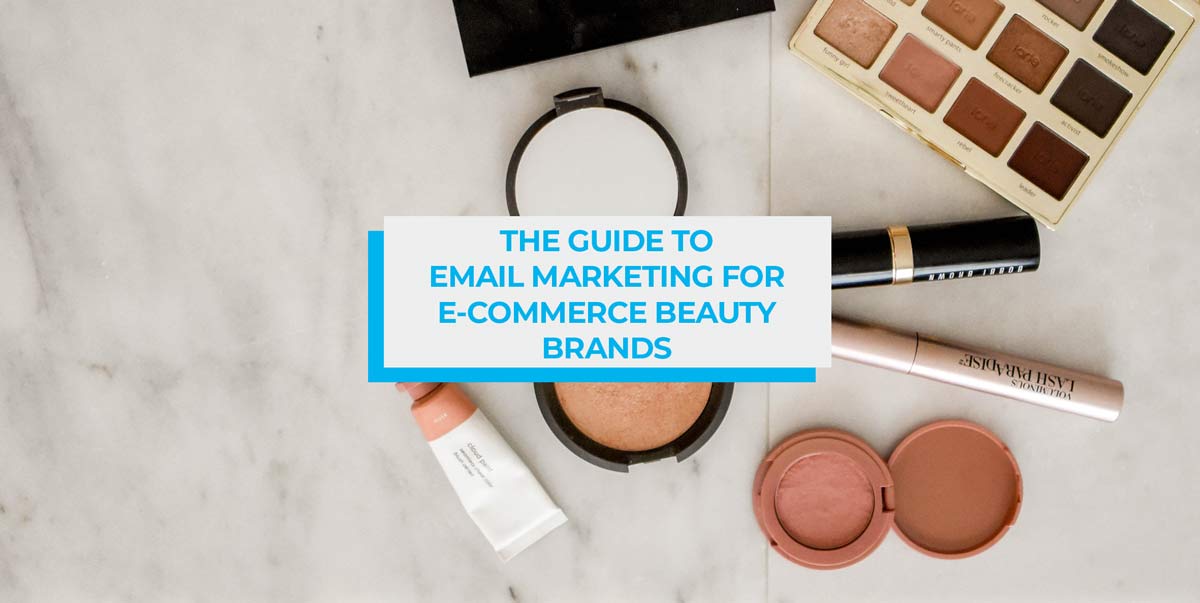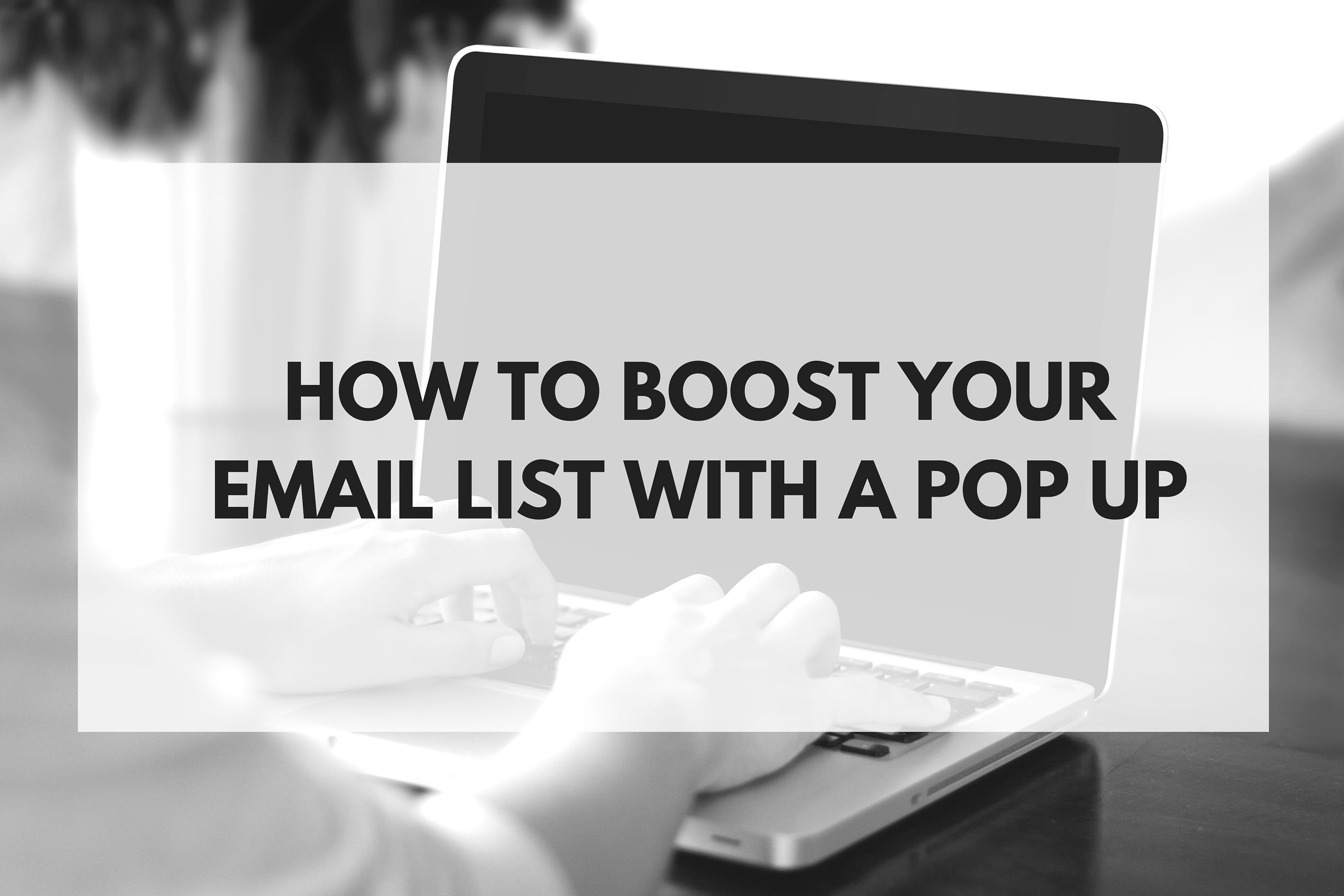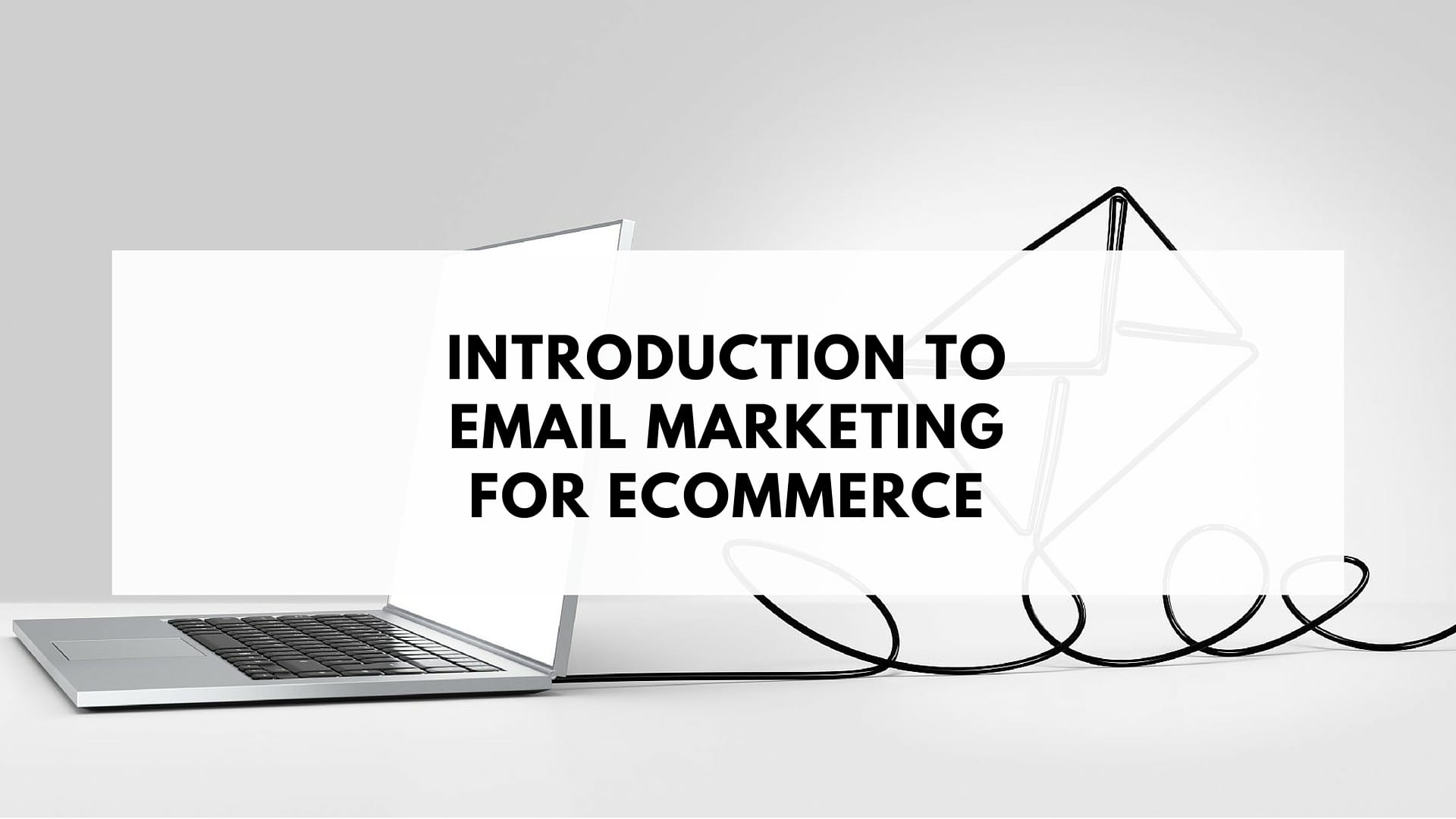Below is our Complete Guide to Beauty Email Marketing for e-commerce. Email marketing is the most effective e-commerce marketing method there is. The DMA National Client Email Report found that $1 spent on email marketing generated an average return of $38. Do you know what that means?
That means that if you aren’t already using email marketing to drive sales in your e-commerce beauty business, you are missing out on a lot of sales… And a lot of money!
In this article, I’ll explain how to build an email list and 7 types of emails that you should be sending your customers. Follow my advice and you’ll increase your sales, revenue, and profit!
But first, let’s take a look at LTV and CAC, and why it matters to e-commerce beauty brands…
Customer Lifetime Value and Customer Acquisition Cost
Understanding LTV and CAC is crucial to beauty brands because they sell consumable goods. Only selling once to each customer is unsustainable – you’ll burn through your marketing budget and won’t have the funds to grow your store.
Our Ultimate Guide to Email Marketing for Health And Fitness E-commerce Stores explained this well:
- “Customer lifetime value (LTV) – This is the amount a person spends during their lifetime as a customer with your business.
- Customer acquisition cost (CAC) – This is the amount it costs you to acquire a new customer through marketing.
For example, if it costs you $50 in marketing to acquire a new customer, and the average customer spends $200 before they stop buying from you, you have made a profit of $150.
This is a 3:1 ratio (LTV/CAC) and should be the first target for your business. If your numbers are below that, you’re missing out on revenue.
But how can you turn one-time customers into repeat customers?
That’s where email marketing comes in. When you have someone’s email address, you can reach out to with various upsells, offers, promotions, etc., as well as valuable content that will help gain their trust. That will increase their LTV because you’ll have more influence over their purchasing decisions. Boosting CAC: LTV ratio will help you make more money and grow your business faster.
Now that you know the value of email marketing, you have no excuses. It’s time to get serious about it!
Where to start?
Email marketing might seem intimidating, but really, it’s pretty easy to set everything up and get going:
- Get the software. You’ll need email marketing software. There are plenty options to choose from, from Aweber to MailChimp to ConvertKit. However, SmartrMail is the only email marketing software that leverages all your e-commerce data to always send the right products to the right customers. We have everything you need.
- Add opt-in forms to your website. An opt-in form is a box that asks you to type in your name and email address. Make sure you have one of those above the fold in your homepage. Then sprinkle them throughout the site. You can’t expect to build an email list at a decent pace if you only have one obscure opt-in form somewhere where no one will see it! Check out Gleam’s Practical Guide to E-Commerce Opt-in Forms to learn more.
- Add pop-ups to your website. Pop-ups are those annoying opt-in forms that pop up when you come to the site and when you leave the site. Everyone hates them, but they do work well, so don’t be shy and don’t miss out on those extra subscribers.
- Create an opt-in incentive. An opt-in incentive is a “bribe” that you give to people in exchange for their email address. It can be content, it can be a discount, it can be a special offer like free shipping. Pick an option that works best for you.
- Setup automated emails. Nurturing your customers into becoming loyal repeat purchasers doesn’t require a lot of time and manual effort. You can set up best practice automations so you’re always sending them relevant products at the right time.
Want to delve deeper into the art and science of building an email list? Read my 5 Steps to Supercharge Your Store’s Email List Growth. It will help you grow your list fast!
Once again, don’t be intimidated, all this is much simpler and takes much less time than it sounds. Get it done.
7 emails that you should be sending to your list
One important note before we get into different types of emails – each email should have one clear goal. It’s hard to get people to act, so there’s no need to confuse them with asking few things at once. Make sure that you know the aim of each email and that each email has a clear call to action.
Okay, so how exactly should you setup your automated emails, and what should you be sending to your email subscribers in order to turn them into loyal customers?
Use Beauty store templates with SmartrMail today
? Install SmartrMail and check out our huge range of free templates ?
1. Welcome Email
Welcome emails are opened at four times higher rate and generate five times the click-through rates than promotional emails.
This means that they are an excellent opportunity to start off the relationship with a customer on the right foot and maybe even make a sale if you are lucky.
Take a look at this welcome email from GlossyBox:
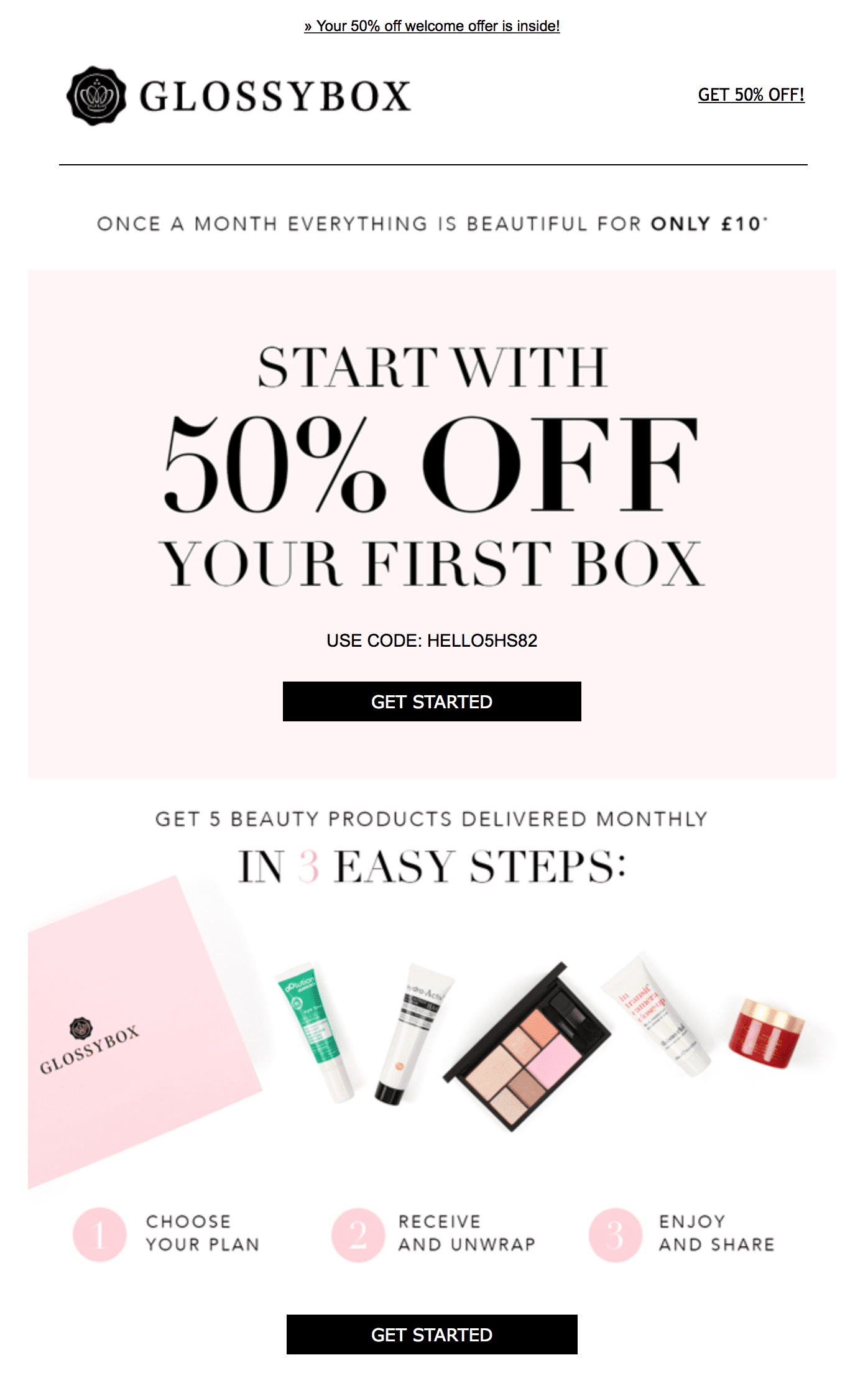
Pay attention to how Glossybox does 2 things with this email:
- They introduce the service they are offering.
- They immediately make a special offer that is hard to resist.
It’s a good idea to combine introduction with a special offer because it nudges the customer towards buying right away.
Make sure that your welcome email is beautiful, informative, and encourages people to make a purchase. Put in the effort. You only get one chance at making the first impression!
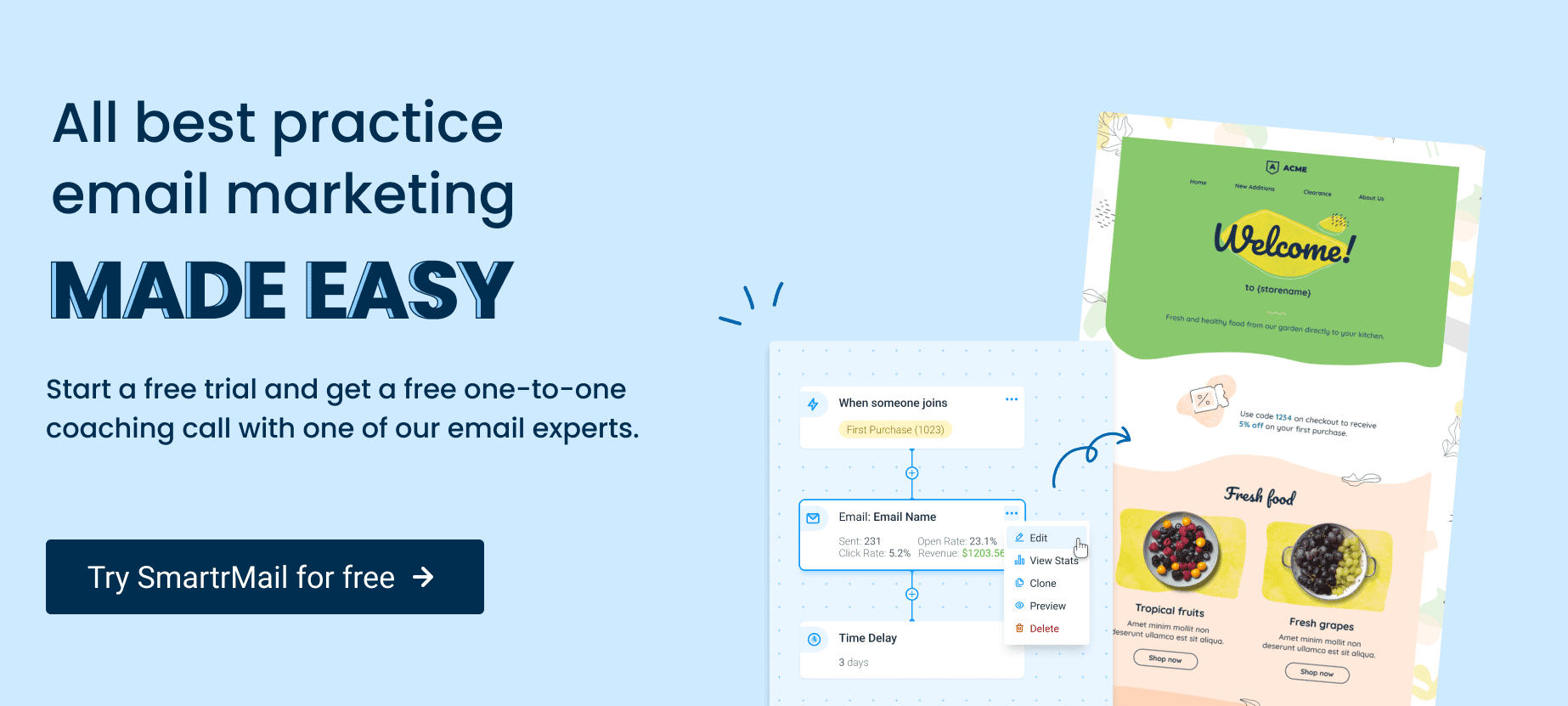
2. Refill Emails
When a customer is happy with your product, say, mascara, chances are that they’ll want to buy the same thing again.
However, life often gets in the way, and people procrastinate on it until they completely run out of it, and then they simply buy it at a local mall.
That’s why it’s important to send friendly reminders to refill in form of refill emails. Calculate how long each refillable product lasts and then set it up so that these emails would be sent automatically. You’ll be making sales without having to think about it!
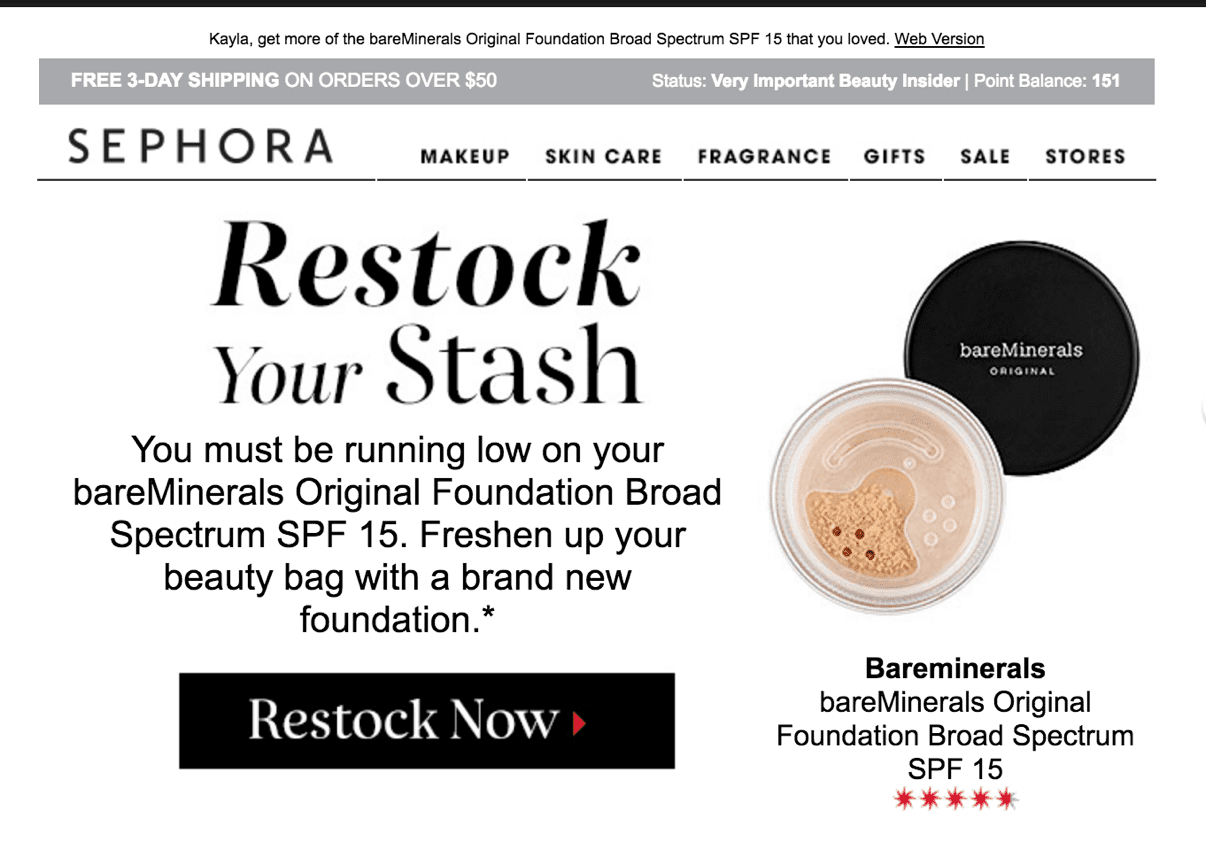
3. Cross-Sell Emails
Cross-selling means inviting the customer to buy items that are complementary to what they have previously purchased.
For example, when someone buys mascara, are they also likely to buy eye shadow? That’s a great opportunity to cross-sell – give those who have not made the additional purchase a gentle nudge by sending them an email offering eye shadows.
Take a look at this cross-sell email from the Dollar Shave Club:
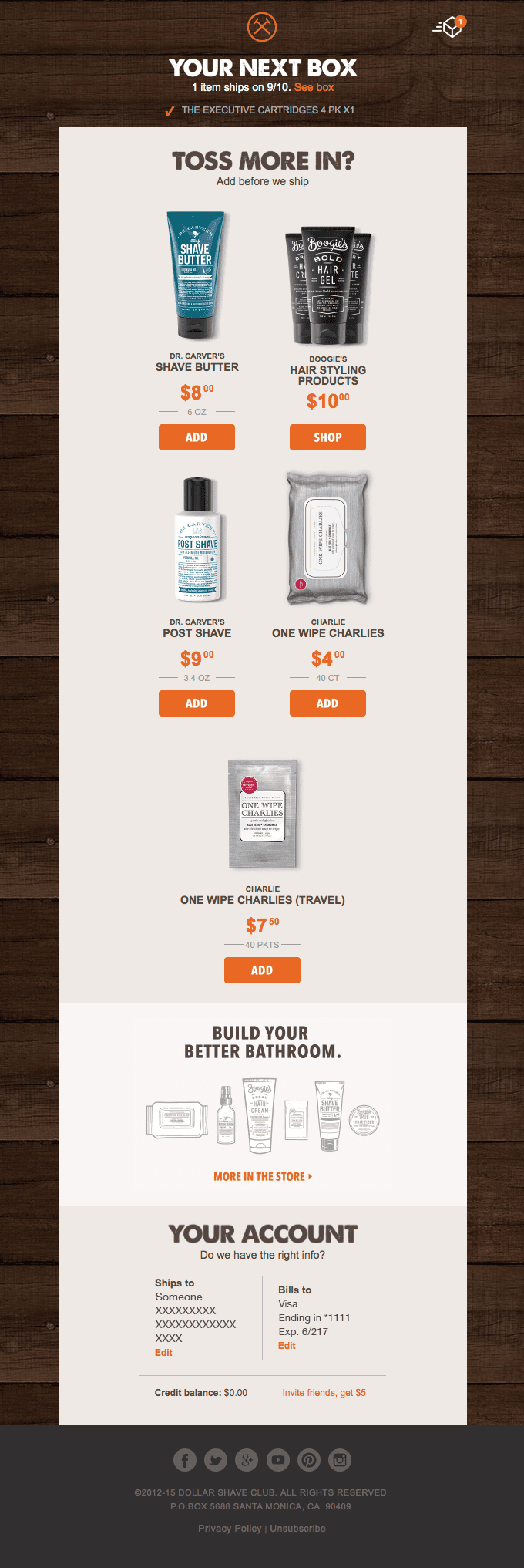
See how they are effortlessly generating sales by sending a simple cross-sell email to the customers who make the purchase?
Analyze your data, see what items people tend to buy together, and set up automatic cross-sell emails.
Want to learn more about cross-selling? Read our guide on How to Cross-Sell like a Pro with Email Marketing.
4. Abandoned Cart Emails
Cart abandonment is a big problem for e-commerce stores – according to Sales Cycle, a staggering 74.52% of carts were abandoned.
This is why cart abandonment emails are so important. You never know why someone stopped in the middle shopping – it’s quite likely that they still have the intent to buy the goods, but were interrupted by something, or simply got distracted. An email could help you pull them back.
Take a look at this abandoned cart email from the Dollar Shave Club:

Do you see how the Dollar Shave Club:
- Explained the benefits of their product.
- Alleviated fears that might have prevented a customer from buying.
This combination of reminding the customer why they wanted to buy the product in the first place and addressing fears that might be preventing them from buying is a great way to structure your abandoned cart email.
Just make sure that you send the first email within an hour of abandonment – that way, everything will still be fresh in the customer’s mind, and they’ll be more likely to complete the purchase. If you’re sending multiple emails (and you should be) you can also give them an extra nudge by making a special offer, like a discount or free shipping.
Read further on this here: 3 Emails to Increase E-commerce Abandoned Cart Recovery in 2017
5. Content Emails
Do you want your customers to see you as an authority in your niche and trust your advice?
That is the aim of a content email. Think about it: what information would make your customers lives easier?
Take a look at this makeup tutorial from Sephora:
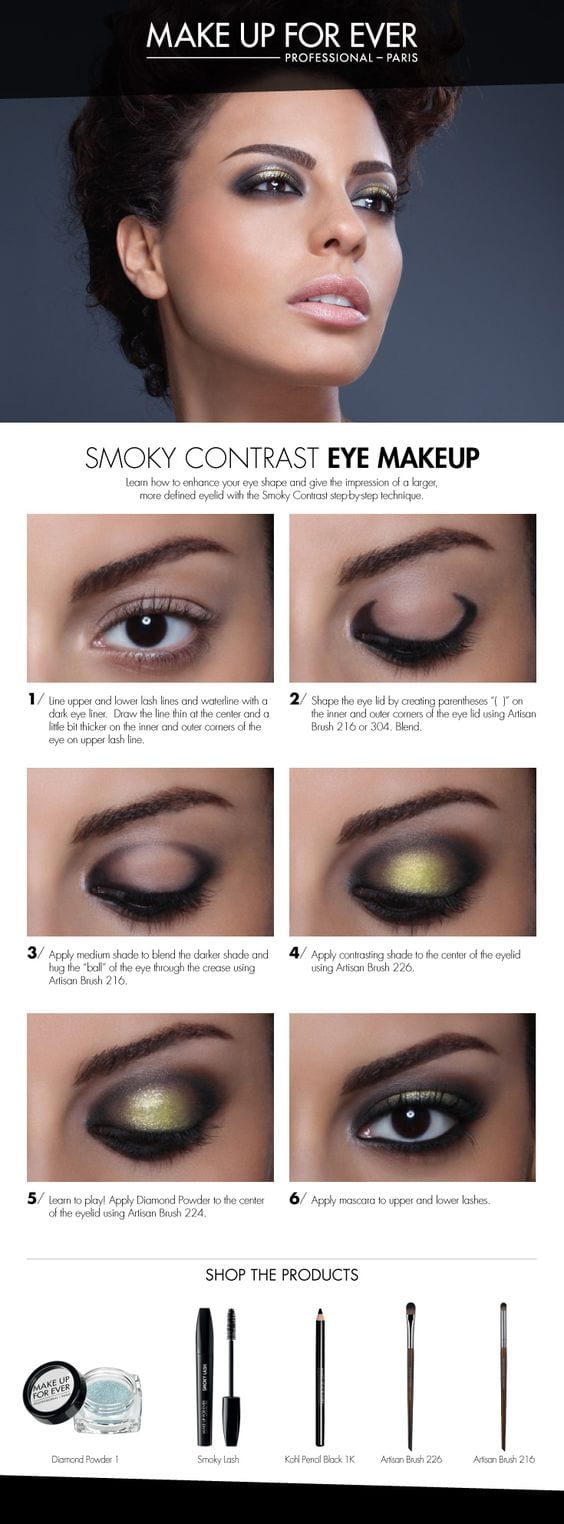
In this email Sephora provided value in terms of content and pitched their products at the same time.
Content could be anything from a makeup tutorial, to a style guide, to an interview with a makeup artist, etc. Just make sure that it’s something you yourself would like to read with your morning coffee. Remember, the aim here is not to sell, it’s to provide value.
6. Thank you email
The post-purchase, or thank you, email should include three things:
- A thank you. Show the customer that you appreciate their business.
- Order confirmation.This email also serves as a receipt.
- Help. Sometimes have questions after they make the purchase. Make sure that they know where to get help.
Take a look at this thank you email from Harry’s. Do you see how it has all three things?

You can also use this as an opportunity to cross-sell by adding something like Amazon’s product recommendations below the email.
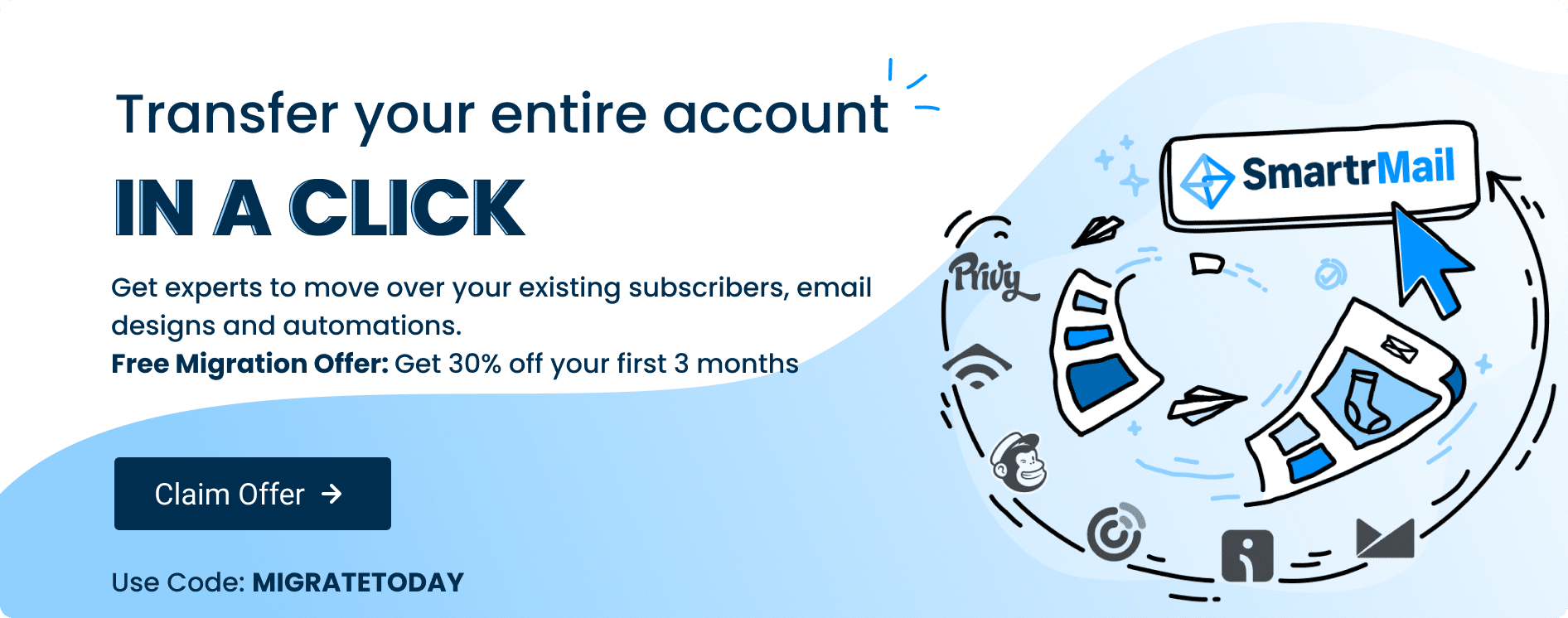
7. Review emails
Reviews are extremely important for your business success.
Think about it. When you want to buy something on Amazon, what do you do? You go to Amazon and read the reviews.
Well, that’s what your customers do as well. According to BigCommerce, 69% of shoppers want to see product reviews on your website.
That means you better get serious about getting those reviews. The best way to do that is to send your customer an email and simply ask for it.
Take a look at this review email by Sephora that displays customer’s purchases and makes it easy to write a review:
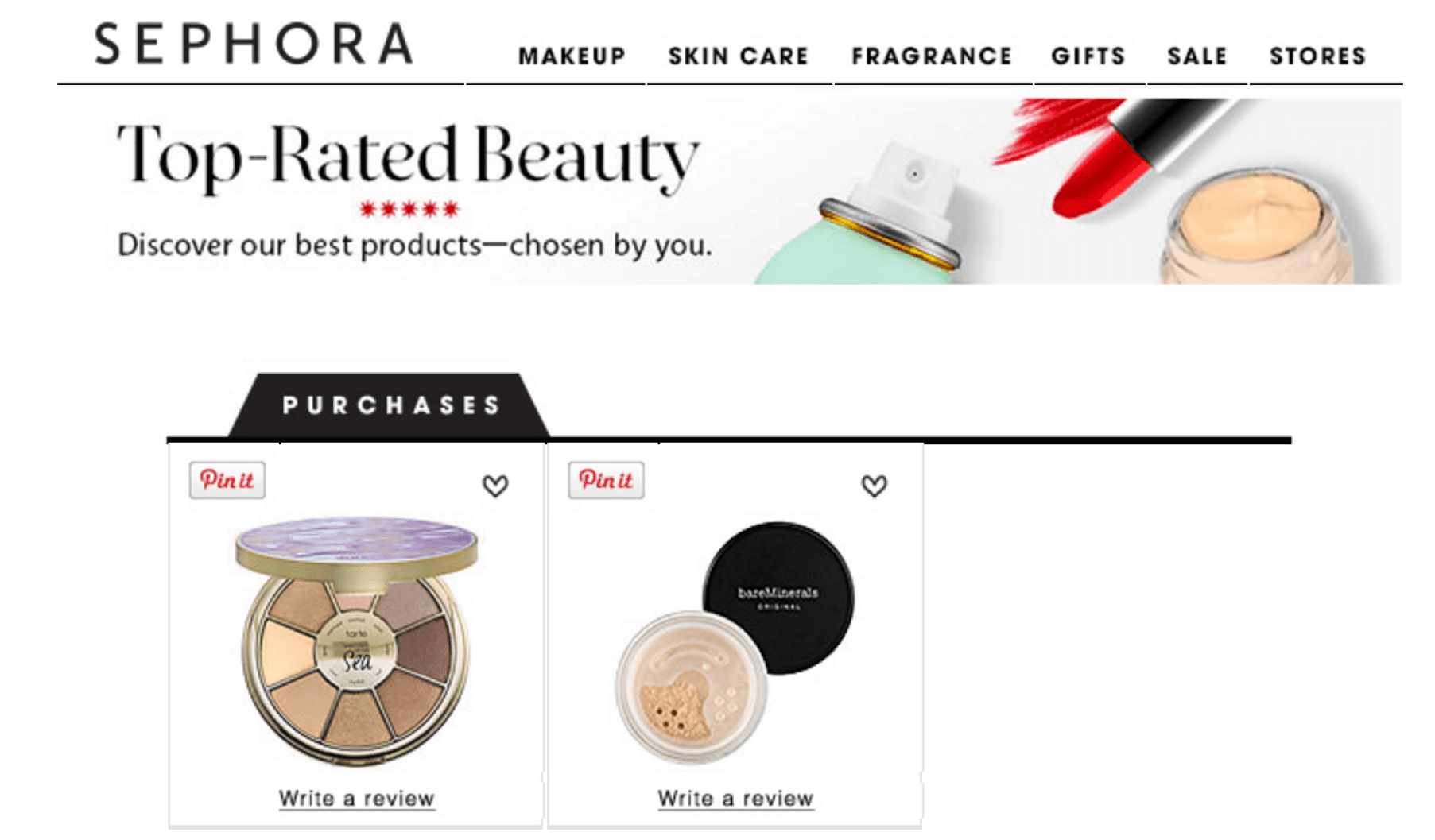
Sure, only a small amount of them will actually bother to take time out of their day to leave a review – but over time, those reviews will add up, and your shop will look more legitimate in the eyes of your customers.
Just do it!
I know all this might sound overwhelming. You don’t need to set everything up at once – give yourself some time. But don’t procrastinate on it too much.
Remember, every day that goes by without you taking advantage of email marketing is a day when you’re losing money in terms of potential sales.
Now, up to you: How are you using email marketing in your business?

